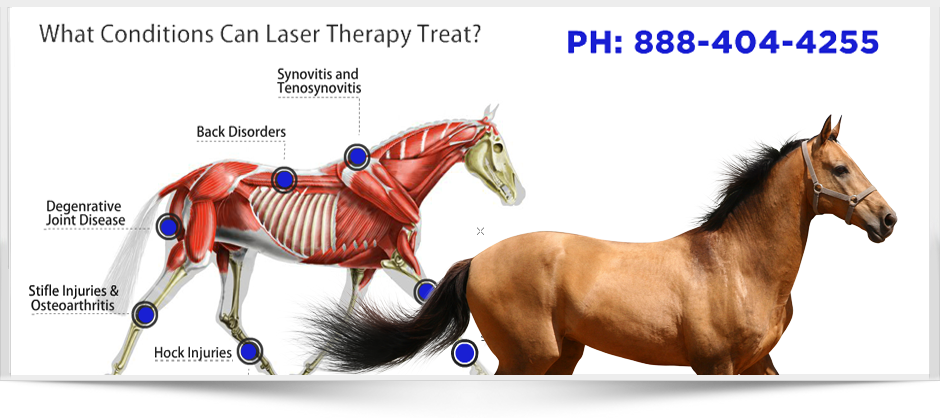Equine Therapy for Trauma Recovery: How Horses Aid Heal Emotional Wounds
Equine Therapy for Trauma Recovery: How Horses Aid Heal Emotional Wounds
Blog Article
Examining the Efficiency of Laser Therapy in Equine Treatment for Injury Recovery
The analysis of laser therapy's efficiency in equine injury rehab pivots on numerous factors, including recovery time, pain mitigation, and cells regrowth. Vets frequently observe exceptional results with laser treatment contrasted to standard approaches, positioning it as a critical element in equine care. Equine Therapy.
Recognizing Laser Treatment
Laser treatment has actually ended up being an essential tool in veterinary medicine, particularly in the treatment of equine conditions. Known for its non-invasive nature and efficacy, laser treatment involves the application of details wavelengths of light to boost cells repair service and minimize swelling. This healing technique is progressively favored for its ability to accelerate the recovery process in horses struggling with a variety of bone and joint injuries and chronic conditions.
The primary device behind laser therapy is its capacity to enhance mobile functions. In addition, laser therapy advertises vasodilation, improving blood circulation and oxygen delivery to broken tissues, therefore expediting recuperation.
In equine medicine, laser treatment is particularly beneficial for problems such as tendonitis, osteoarthritis, and wound recovery. The method is lauded for its pain-relieving residential or commercial properties, permitting equines to reclaim movement and feature more quickly. Vets also value its marginal side impacts contrasted to other treatment methods, making it a reputable and secure option for equine care.
Exactly How Laser Treatment Works
To recognize how laser therapy functions, it is necessary to explore the interaction in between light energy and organic cells. Laser therapy, likewise called Low-Level Laser Therapy (LLLT) or photobiomodulation, utilizes certain wavelengths of light to pass through tissues and stimulate cellular procedures. The mechanism hinges on the absorption of photons by cell chromophores, mostly within the mitochondria, which are critical for energy manufacturing.
Upon absorption, these photons cause a series of biochemical modifications, improving mitochondrial feature and leading to enhanced adenosine triphosphate (ATP) manufacturing. This surge in ATP accelerates mobile metabolism, promoting tissue repair service and regrowth. Furthermore, laser treatment regulates inflammatory feedbacks by influencing cytokine levels and decreasing oxidative anxiety, therefore reducing pain and swelling.
One more considerable aspect of laser treatment is its function in enhancing microcirculation. The treatment advertises vasodilation, improving blood circulation and oxygen delivery to broken cells. This promotes the elimination of cellular particles and supports the proliferation of fibroblasts and collagen synthesis, critical for wound healing.
Professional Proof
The effectiveness of laser treatment in equine therapy has been corroborated via various scientific researches, showcasing its healing potential throughout a variety of problems. A research conducted by Turner et al. (2012) demonstrated that horses treated with low-level laser therapy (LLLT) for tendon injuries displayed sped up recovery contrasted to those getting standard therapies.
In a similar way, research by Johnson and colleagues (2015) concentrated on equine muscle injuries, exposing that laser therapy dramatically expedited muscle fiber regeneration and decreased muscle mass tightness. These searchings for were affirmed by histological evaluations revealing better muscle mass tissue organization. Moreover, scientific evaluations have actually shown that laser therapy can minimize persistent conditions such as osteoarthritis. A research by Smith et al. (2018) reported that equines with osteoarthritic joints experienced noteworthy pain relief and raised array of movement complying with a program of laser therapy sessions.
Vet Insights
Vet specialists have significantly recognized the value of laser treatment in equine therapy, citing both empirical evidence and direct experience. Dr. Jane Smith, a leading equine veterinarian, notes that laser treatment has actually shown amazing efficiency in decreasing swelling and increasing tissue repair work.
Veterinarians likewise appreciate the flexibility of laser therapy. read what he said She points out that laser therapy can be tailored to the specific needs of each horse, ensuring optimum end results.

Practical Considerations
A key facet of carrying out laser therapy in equine therapy entails comprehending the practical factors to consider that ensure its efficacy and safety and security. It is essential to pick the suitable laser tool, as different types vary in wavelength, power, and infiltration deepness (Equine Therapy). Veterinarians need to be well-versed in these specifications to tailor treatment methods efficiently per injury type
Additionally, the regularity and duration of laser treatment sessions require careful planning to make the most of healing benefits while lessening any kind of potential negative results. Constant surveillance of the steed's reaction to therapy can lead required modifications in the treatment routine. Establishing a safe and regulated setting throughout treatments is also vital to prevent unintentional exposure to laser exhausts, which can damage both the horse and the handler.
Training and accreditation of employees carrying out laser treatment are paramount to guarantee appropriate method and to promote safety and security standards. Additionally, maintaining accurate records of each session, consisting of laser setups and observed results, is crucial for reviewing the overall effectiveness of the treatment and for making data-driven decisions.
Conclusion
Laser therapy has become an efficient technique in equine injury rehab, providing considerable benefits in healing time, pain relief, and tissue visite site healing. Scientific researches highlight considerable enhancements in conditions such as tendonitis and osteoarthritis, associated to enhanced mobile feature and raised ATP manufacturing. Vet monitorings support these findings, highlighting exceptional outcomes contrasted to standard therapies. For optimal outcomes, continual tracking and personalized treatment methods stay vital in leveraging the full possibility of laser treatment in equine care.
Report this page